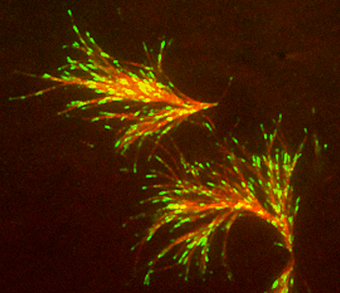Ronald D. Vale, Ph.D.
Professor and Vice-Chairman of the Department of Cellular and Molecular Pharmacology
Investigator, Howard Hughes Medical Institute (HHMI)
The University of California, San Francisco San Francisco, CA, USA
関連製品
- ECLIPSE Ti-E Inverted Microscope (現行機種:ECLIPSE Ti2)
- TIRF Illumination System
Please briefly describe your research.
I am a cell biologist and biophysicist.
Which Nikon instruments do you have?
Most of my work has involved TIRF microscopy with the Nikon Ti.
What are some of the outstanding aspects of Nikon systems?
The quality of the objective lens for TIRF microscopy is outstanding and that is the most important part of the microscope. Also, Nikon pioneered the development of autofocus on commercial microscopes and this feature has been essential for much of our work that involves time-lapse imaging or a narrow depth-of-field (e.g. TIRF). Nikon also has continually improved their TIRF illuminator and now it is extremely fast and simple to align. The new improvements in the optics of the illuminator have provided a much more evenly illuminated field of view.
How have Nikon instruments helped your research?
I do not have much time to do bench research anymore. But when I do have time, I enjoy doing experiments that involve microscopy. I can get microscopy experiments up and running quickly when I use a Nikon Ti microscope. This microscope and its robotics are intuitive and the image quality is outstanding. If my experiments don’t work, I can’t blame the microscope!


